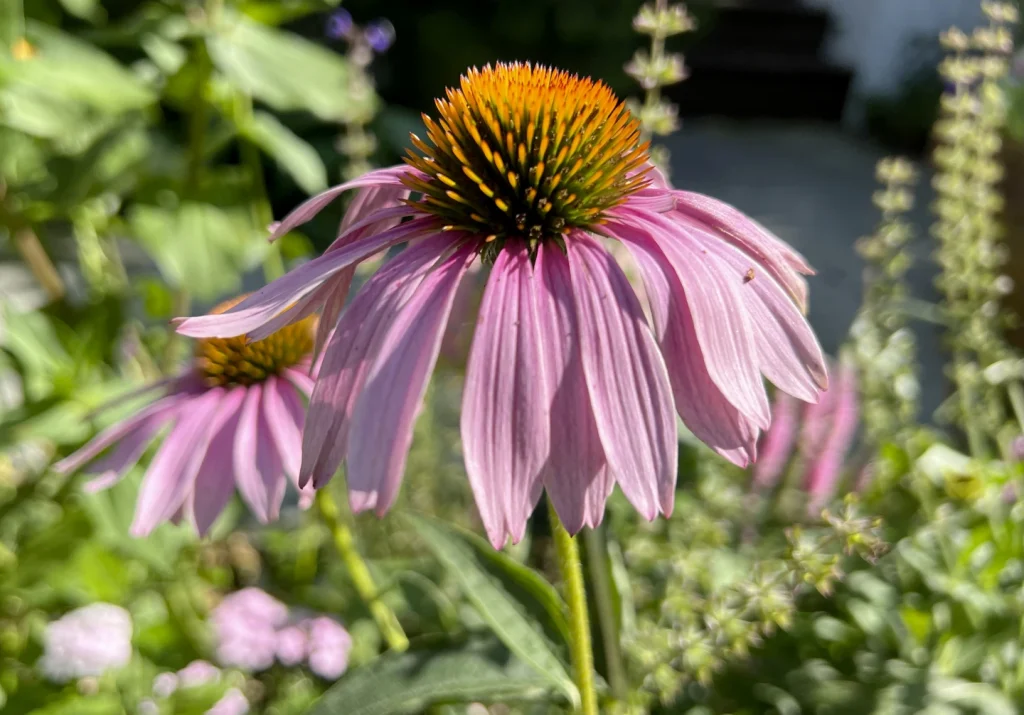In light of the unprecedented heatwaves affecting numerous regions both domestically and internationally, I have noticed a surge of gardeners expressing their grievances on my social media platforms, accompanied by photographs showcasing the unfortunate demise of their annuals and perennials.
While my tomato plants in suburban New York have remained stagnant, stubbornly locked in their green phase for the past few weeks, my flower garden has defied the odds and flourished.
Astonishingly, it has managed to thrive despite enduring scorching temperatures of up to 100 degrees Fahrenheit, with minimal supplemental irrigation.
Throughout the summer, I have only watered my flower beds and borders twice, and even then, it was merely a precautionary measure.
Remarkably, I have not employed any extraordinary methods to transform my plants into superheroes. Rather, my success can be attributed to the careful selection of appropriate plant varieties during the initial planting phase, coupled with tender loving care throughout their growth and development.
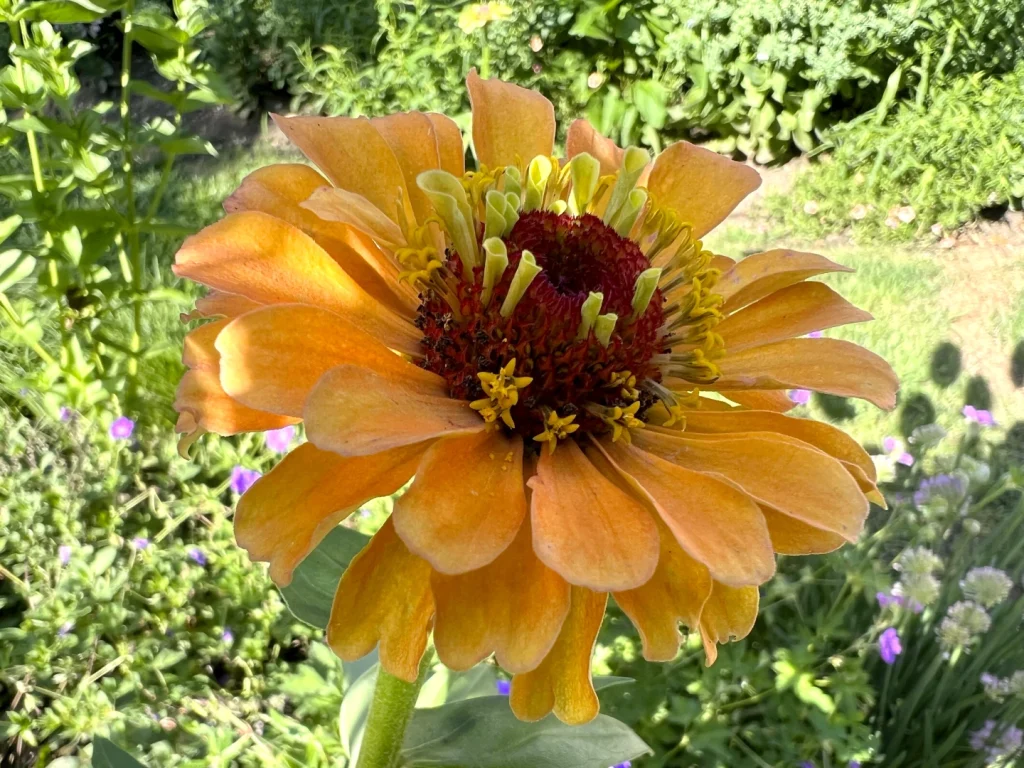
CHOOSING HEAT-TOLERANT PLANTS
During periods of intense heat, particularly when accompanied by dry conditions, the moisture content in the soil evaporates rapidly, leading to a significant challenge for plants.
In order to counteract this loss, plants are forced to rely on their own limited reserves of moisture to rehydrate.
However, this process diverts their energy away from vital growth, flowering, fruiting, and reproduction activities, instead redirecting it towards cooling and hydration.
Consequently, plants experience considerable stress as a result of this adaptation, which often results in their resources being depleted.
In the realm of plant life, the concept of native species holds a significant place of importance. Native plants, those that have evolved and adapted to a specific region over time, possess a remarkable ability to thrive in their natural habitats.
One of the key factors contributing to their success lies in their development of deep, extensive root systems.
These intricate networks of roots enable native plants to access distant moisture sources, even during periods of drought when the immediate surroundings become parched.
This remarkable adaptation allows them to withstand and endure challenging conditions, ensuring their continued survival.
However, the story takes a different turn when it comes to exotic plants, particularly annuals. Unlike their native counterparts, these non-indigenous species often possess shallow root systems.
Consequently, they must depend solely on the top few inches of soil to meet their water requirements. When this limited water source dries up, the fate of these exotics is sealed, leading to their withering demise.
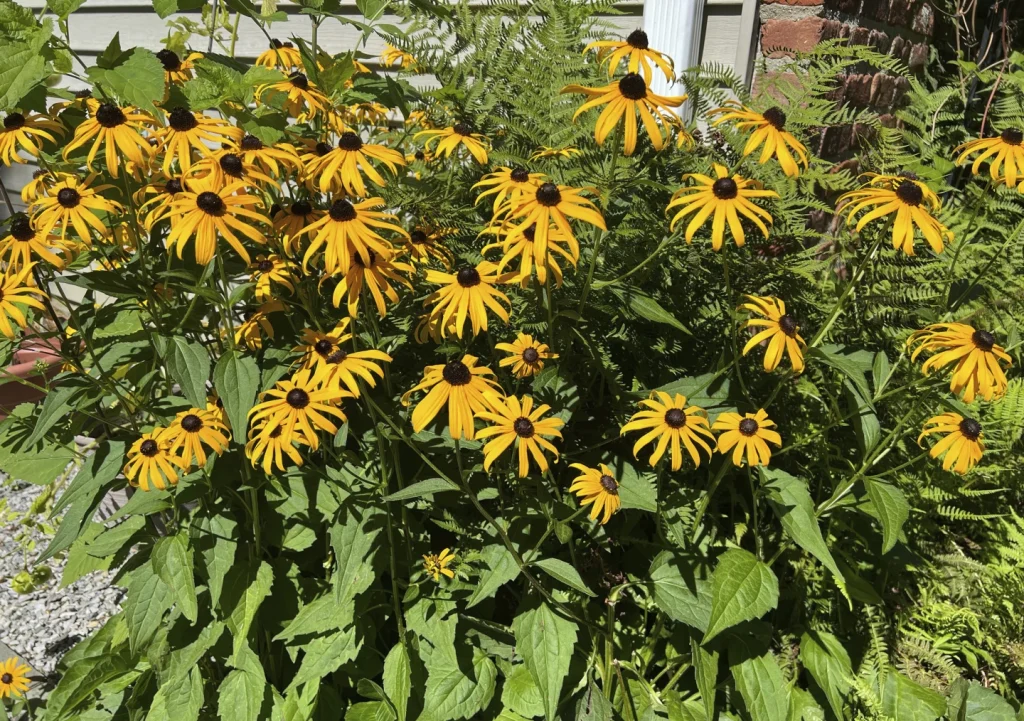
In order to conserve water, minimize expenses, and avoid unnecessary stress, it is advisable to conduct research on the plants that are indigenous to your specific region.
A good starting point for this endeavor is the website of Homegrown National Park, which provides valuable resources.
In the case of my location, the New York region, this would entail considering perennial plants such as bee balm (Monarda didyma), black-eyed Susan (Rudbeckia hirta), purple coneflower (Echinacea purpurea), gayfeather (Liatris spicata), gray goldenrod (Solidago nemoralis), lanceleaf coreopsis (Coreopsis lanceolata), New York (Aster novi-belgii) and New England (Aster novae-angliae) asters, as well as butterfly weed (Asclepias tuberosa).
These plants have become recurring elements in my garden, enhancing its overall aesthetic appeal.
In addition to the vibrant array of native plants that grace my garden, I also take great pleasure in cultivating a selection of well-behaved, non-native perennials that possess remarkable heat and drought tolerance.
These perennials, along with the annuals that I carefully nurture in pots, add a delightful touch to my flower beds. One such example is the mildew-resistant “Bounce” impatiens, whose resilient nature is truly reflected in their name.
Even during scorching days, these impatiens manage to bounce back from heat-induced wilting with a thorough watering at the end of a grueling day.
Another group of plants that have proven to be remarkably resilient in the face of dry and hot weather are succulents, both annual and perennial.
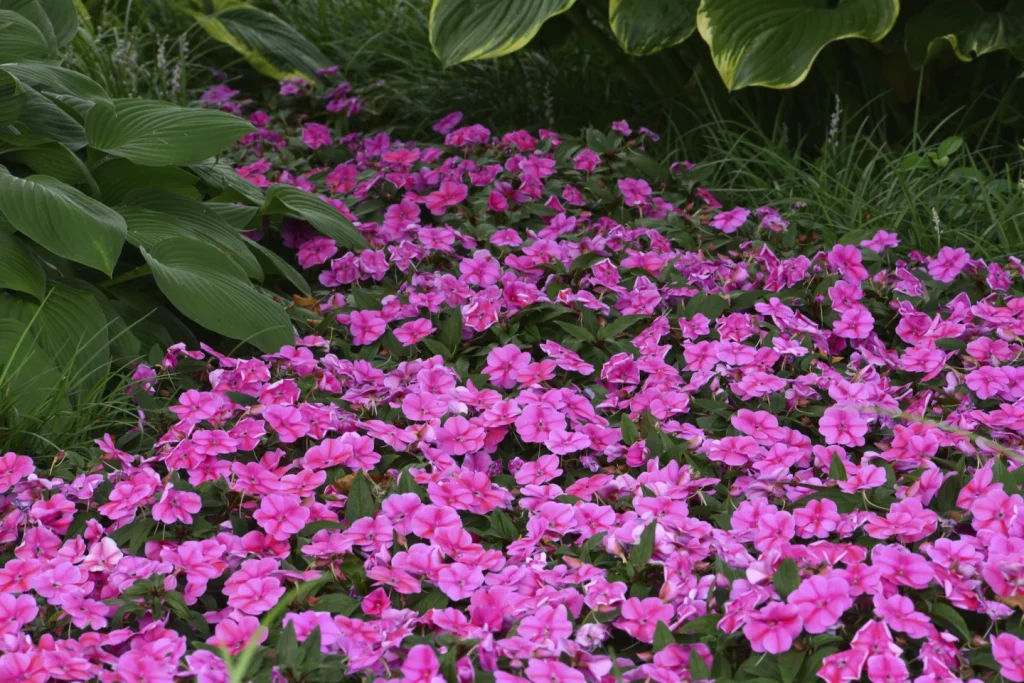
Sedums, also known as stonecrop, are particularly noteworthy in this regard. These succulents owe their ability to withstand harsh conditions to their thick leaves, which are filled with a nourishing sap.
This sap functions much like a camel’s hump, storing and releasing moisture as the plants require it.
In the realm of horticulture, there exists a diverse array of plant species that possess the remarkable ability to withstand and thrive in extreme heat conditions.
These resilient plants, which include angelonia, beardtongue (Penstemon spp.), begonia, million bells (Calibrachoa spp.), catmint (Nepeta spp.), floss flower (Ageratum spp.), lantana, lavender (Lavendula spp.), marigold (Tagetes spp.), moss rose (Portulaca oleracea), petunia, salvia, verbena, and zinnia, have become invaluable in landscaping and gardening practices.
Their capacity to endure scorching temperatures and still exhibit their vibrant blooms and lush foliage is truly remarkable.
From the delicate yet tenacious petals of angelonia to the robust and aromatic lavender, each of these plants has its own unique qualities that contribute to their resilience in the face of harsh heat.
Whether it be their ability to conserve water, adapt to arid conditions, or simply possess a higher tolerance for extreme temperatures, these plants have proven themselves to be stalwart companions for gardeners and landscapers alike.
With their presence, even the most barren and inhospitable of environments can be transformed into oases of beauty and respite.
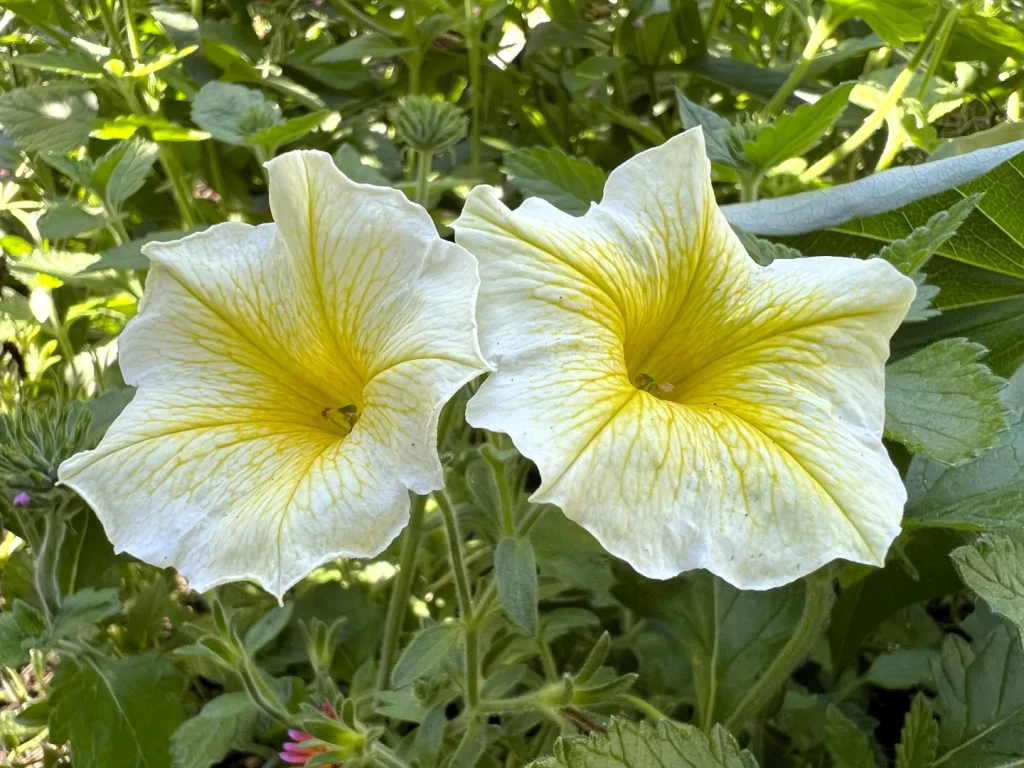
PLANTING TIPS
In the realm of horticulture, I have developed a steadfast practice of ensuring the success of my plantings by meticulously dusting the root balls with powdered mycorrhizae fungi.
These remarkable fungi have the unique ability to colonize the roots of plants, forming a symbiotic relationship that not only enhances nutrient uptake but also aids in the plant’s ability to tolerate various environmental stresses, such as severe heat.
Recognizing the potential benefits of seaweed, which encompasses the versatile kelp, I have incorporated a monthly dose of a seaweed-containing fish emulsion and a vitamin-hormone-kelp product into my planting regimen.
Extensive research has demonstrated that seaweed can significantly improve stress tolerance in plants, further bolstering their resilience and adaptability.
Additionally, I have observed that this comprehensive protocol proves particularly effective in facilitating the rapid adjustment of plants after undergoing the processes of division and transplantation.
Through these carefully selected measures, I strive to optimize the health and vitality of my plantings, ensuring their ability to thrive in a diverse range of conditions.
In conclusion, the addition of a liberal mulch application can be considered as the ultimate finishing touch to enhance the quality of your soil.
Apart from its aesthetic benefits in maintaining a neat and organized appearance, mulch serves a multitude of practical purposes that are vital for the overall health and growth of your plants.
One of its key advantages is its ability to suppress the growth of weeds, which can be a persistent and unwelcome nuisance in any garden or landscape.
By creating a physical barrier between the soil and the outside environment, mulch effectively prevents weed seeds from germinating and establishing themselves, thereby reducing the need for constant weeding and minimizing competition for essential nutrients and resources.
Additionally, mulch plays a crucial role in regulating soil temperatures, ensuring that they remain consistent and well-balanced throughout the year.
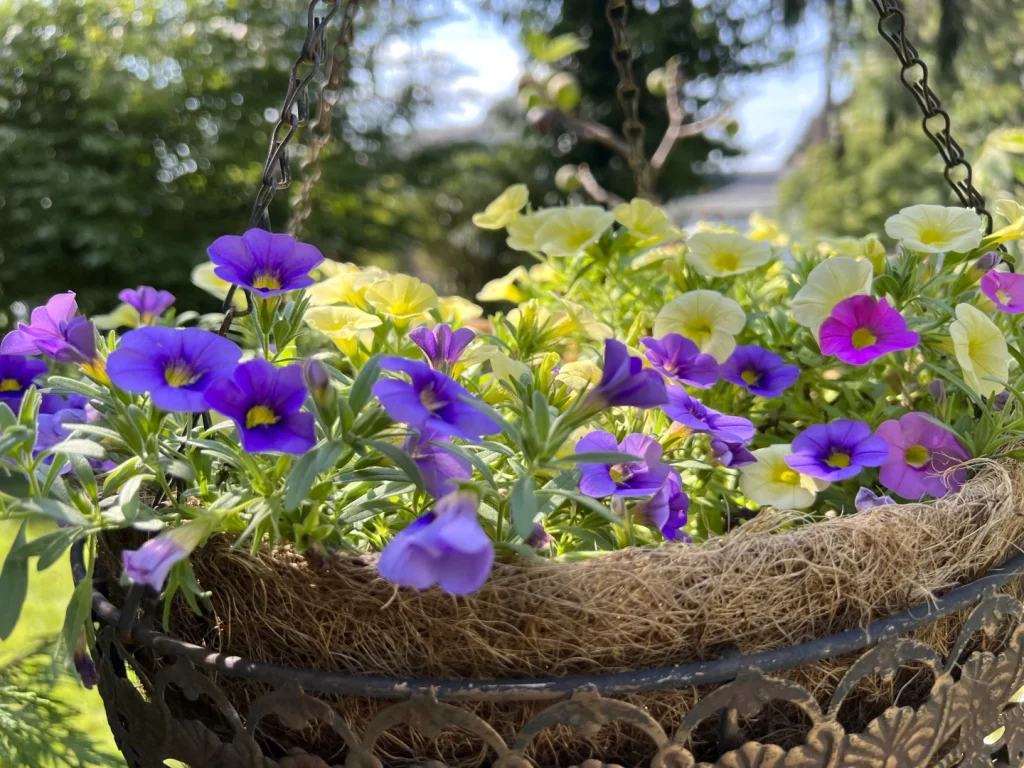
This is particularly important during extreme weather conditions, such as scorching hot summers, as excessive heat can be detrimental to the survival and well-being of plants.
By providing insulation, mulch acts as a protective shield, shielding the soil from excessive heat and preventing it from drying out too quickly.
Moreover, mulch also serves as a valuable tool in retaining soil moisture, which is of utmost importance in sustaining plant life, especially in regions with limited water resources or during periods of drought.
By acting as a barrier against evaporation, mulch helps to conserve water within the soil, reducing the frequency and quantity of irrigation required.
This not only saves time and effort but also promotes water efficiency and environmental sustainability. Ultimately, the incorporation of mulch in your gardening or landscaping endeavors can significantly contribute to the overall health, vitality, and longevity of your plants, ensuring their ability to thrive even in challenging conditions.
